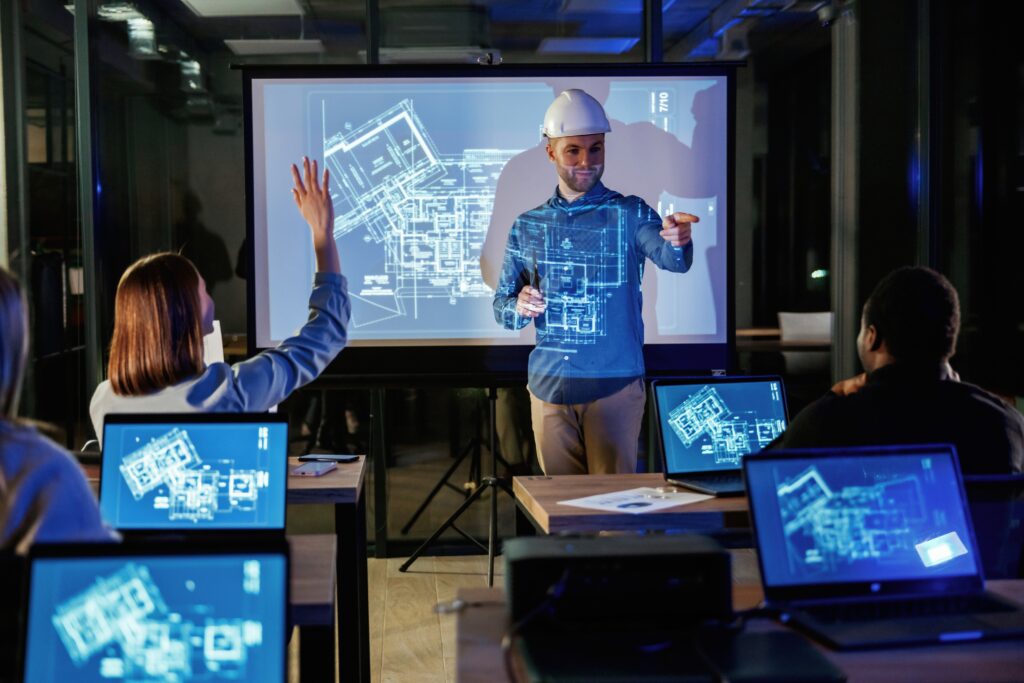As facility operations grow more complex and expectations for efficiency, safety, and sustainability rise, U.S. conventions have become vital platforms for unveiling the future of infrastructure management. At the forefront of this transformation are innovative technologies that redefine how healthcare centers, manufacturing plants, and commercial facilities operate.
At recent events—including BMA Conventions and other national infrastructure expos—seven groundbreaking solutions stood out for their immediate applicability and strategic impact. Below, we explore the facility innovations that are setting new industry benchmarks.

1. Predictive Maintenance Platforms Powered by Artificial Intelligence
AI-enabled predictive maintenance has emerged as a cornerstone technology in modern facility management. These systems continuously monitor asset performance, forecast equipment failures, and generate automated alerts—dramatically reducing unplanned downtime and operational costs.
🧠 Strategic Benefit: One major healthcare facility reported a 35% reduction in HVAC system failures after implementing AI-based monitoring tools.
2. IoT-Integrated Smart HVAC Systems
Energy efficiency, occupant comfort, and regulatory compliance are driving adoption of smart HVAC systems equipped with IoT sensors. These systems adjust airflow, temperature, and humidity based on real-time occupancy and environmental data—optimizing both cost and carbon output.
🌱 Why It Matters: Facilities pursuing LEED certification or ESG alignment can significantly improve their sustainability metrics with smart HVAC integration.
3. Contactless Access and Automation Solutions
The post-pandemic shift toward touchless technology has accelerated. From RFID-enabled entry systems and mobile app-based lighting control to voice-activated elevators, contactless solutions are enhancing user safety and operational simplicity.
🔐 Ideal Use Cases: Healthcare institutions, academic campuses, and corporate headquarters focused on health security and streamlined access.

4. Augmented Reality for Remote Inspections and Training
Augmented reality (AR) tools are transforming remote facility operations. Convention demos highlighted smart glasses and mobile platforms that allow remote experts to guide on-site staff through complex inspections, maintenance procedures, or safety checks—all in real time.
🛠️ Operational Impact: AR reduces travel costs, accelerates training cycles, and ensures real-time expert oversight without physical presence.
5. Digital Twin Technology for Simulation and Optimization
Digital twin platforms create dynamic, real-time virtual models of physical assets. Facility managers use these simulations to test operational scenarios, forecast energy consumption, and redesign workflows without interrupting day-to-day operations.
🏗 Real-World Application: A U.S. manufacturing facility improved layout efficiency by 22% after integrating a digital twin model into its facility planning.
6. Integrated Emergency Alert and Building Response Systems
Facility safety is being redefined through fully integrated emergency response platforms. These systems interface with building automation, fire alarms, and digital signage to deliver coordinated evacuation protocols and real-time alerts during emergencies.
🚨 Key Advantage: Faster, automated response improves occupant safety while reducing human error during high-stress situations.
7. ESG Dashboards and Sustainability Compliance Tools
Environmental, Social, and Governance (ESG) reporting is now a core business requirement. At the conventions, integrated dashboards were showcased that monitor energy use, emissions, water consumption, and compliance metrics—all in one interface.
📊 Business Case: These platforms streamline regulatory compliance, attract ESG-focused investors, and support grant applications for sustainability upgrades.

Conclusion: Facilities of the Future Start at Today’s Conventions-
The technologies highlighted at U.S. facility management conventions are not theoretical—they are actively being deployed to solve critical operational challenges. From enhancing energy performance and safety protocols to leveraging AI and data for smarter decisions, these innovations are reshaping the facilities landscape.
For forward-thinking facility managers, engineers, and executive decision-makers, attending conventions such as BMA Conventions is more than professional development—it’s a strategic imperative.







